Cimabue
Paintings
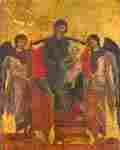
The Virgin and Child Enthroned with Two Angels
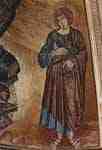
Apse mosaic in Pisa: Christ enthroned
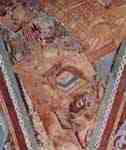
Frescoes in Assisi , John the Evangelist , detail
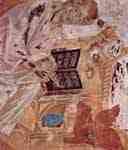
Frescoes in Assisi : St. Lucas , detail
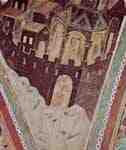
Frescoes in Assisi : St. Lucas , detail
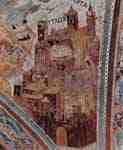
Frescoes in Assisi : St. Marco , detail
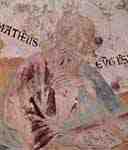
Frescoes in Assisi : St. Matthew , detail
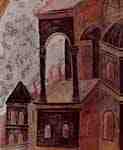
Frescoes in Assisi : St. Matthew , detail
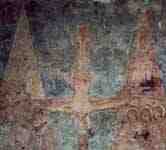
Frescoes in Assisi : Peter and Paul, details
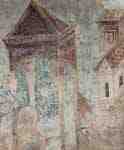
Frescoes in Assisi : Peter and Paul, details
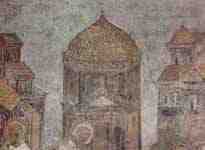
Frescoes in Assisi : Peter and Paul, details

Frescoes in Assisi : Apocalypse , detail
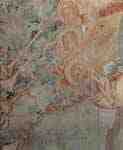
Frescoes in Assisi : Apocalypse , detail

Frescoes in Assisi : Apocalypse , detail
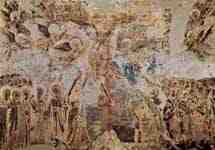
Frescoes in Assisi : Crucifixion
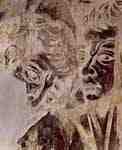
Frescoes in Assisi : Crucifixion , detail
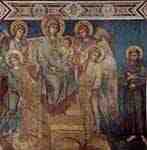
Frescoes in Assisi : Enthroned Madonna
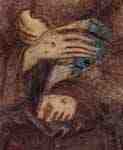
Frescoes in Assisi : Enthroned Madonna , detail
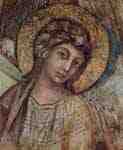
Frescoes in Assisi : Enthroned Madonna , detail
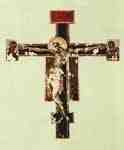
Crucifixion of Santa Croce in Florence

Crucifixion of Santa Croce , detail
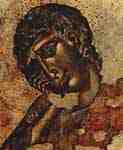
Crucifixion of Santa Croce , detail
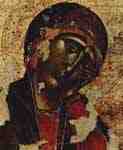
Crucifixion of Santa Croce , detail
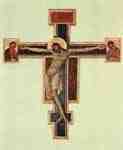
Crucifixion of Santa Croce, state before 1966
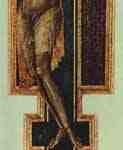
Crucifixion of Santa Croce, state before 1966 , detail


Mary with angels , from San Francesco in Pisa

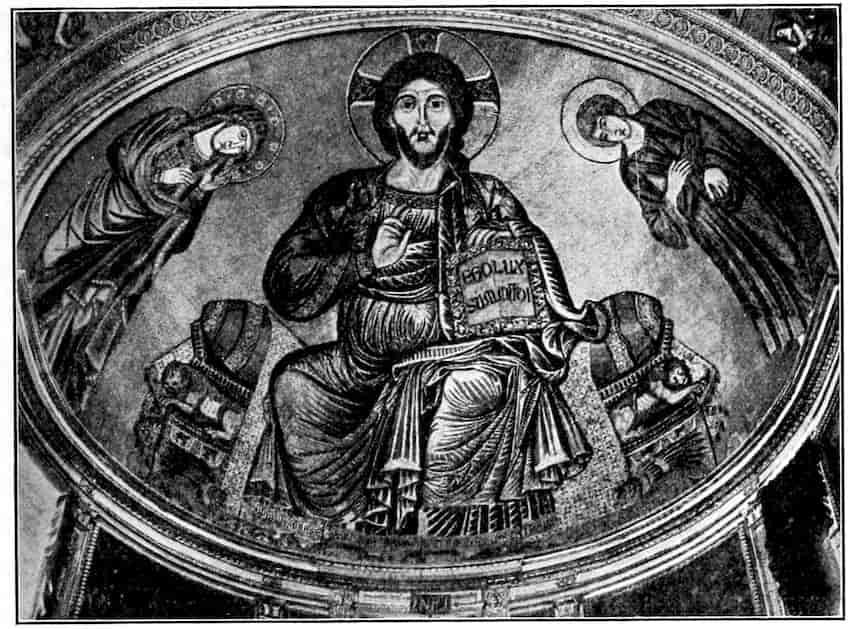
Mosaic in the Cathedral, Pisa. St. John, left, is by Cimabue, 1302; the Christ is in good Byzantine tradition; the Virgin, right, is some twenty years later.
Fine Art Prints | Greeting Cards | Phone Cases | Lifestyle | Face Masks | Men's , Women' Apparel | Home Decor | jigsaw puzzles | Notebooks | Tapestries | ...
Cimabue (Italian: [tʃimaˈbuː.e]; c. 1240 – 1302),[1] (also known as Cenni Di Pepi or in modern Italian, Benvenuto di Giuseppe) was a Florentine painter and creator of mosaics.
Cimabue is generally regarded as one of the first great Italian painters to break from the Italo-Byzantine style, although he still relied on Byzantine models.[2] The art of this period comprised scenes and forms that appeared relatively flat and highly stylized. Cimabue was a pioneer in the move towards naturalism; his figures were depicted with more lifelike proportions and shading. Even though he was a pioneer in that move, his Maestà paintings evidence Medieval techniques and characteristics. According to Giorgio Vasari, he was the teacher of Giotto,[1] the first great artist of the Italian Proto-Renaissance.
Life
St. Francis of Assisi
Owing to little surviving documentation, not much is known about Cimabue's life. He was born in Florence and died in Pisa. His career was described in Giorgio Vasari's Lives of the Most Excellent Painters, Sculptors, and Architects. Although it is one of the few early records about him, its accuracy is uncertain.
Fresco in the Lower Basilica of Assisi.
He perhaps trained in Florence under unknown masters culturally connected to Byzantine art. His first attributed work, the Crucifixion in the church of San Domenico in Arezzo (assigned to him by Italian art historian Pietro Toesca and dated to around 1270), departed from the Byzantine style. His style was at the time more reminiscent of works such as the Christus patiens (c. 1250) by Giunta Pisano, although Cimabue's Christ is more bent and the clothes have the golden striations introduced by Coppo di Marcovaldo.
Around 1272 he is documented in Rome. A little later, he made another Crucifixion for the Florentine church of Santa Croce (incidentally: damaged by the 1966 Arno River flood). This is a larger and more evolved work than that in Arezzo, with traces of naturalism perhaps inspired by Nicola Pisano's works. In the same period (c. 1280) he painted the Maestà now at the Louvre Museum, originally in the church of San Francesco at Pisa. This work established a style which was followed by numerous artists after him, including Duccio di Buoninsegna in his Rucellai Madonna (once wrongly attributed to Cimabue), as well as Giotto himself. Other works dating to this period, in which the influence of his pupil Giotto becomes manifest, include a Flagellation (Frick Collection), mosaics for the Baptistery of Florence (now largely restored), the Maestà at the Santa Maria dei Servi in Bologna and the Madonna in the Pinacoteca of Castelfiorentino. A workshop painting, perhaps assignable to a slightly later period, is the Maestà with Saints Francis and Dominic now at the Uffizi.
During the pontificate of Pope Nicholas IV, the first Franciscan pope, Cimabue worked at Assisi. His call was perhaps due to the fame he gained in Rome in 1272, although no works from his stay there are known. At Assisi, in the transept of the Lower Basilica of San Francesco, he frescoed a Madonna with Child Enthroned, Four Angels and St. Francis; the left part of the work is missing, and perhaps showed St. Antony of Padua. The authorship of the painting has been recently disputed for technical and stylistic reasons, however. Cimabue was subsequently commissioned the decoration of the apse and the transept of the Upper Basilica of Assisi, in the same period in which Roman artists were frescoing the nave. The cycle comprises scenes from the Gospels, the life of Mary and of St. Peter and St. Paul, and is today in poor condition due to the oxidation of the brighter colors.
Crucifix, 1287–1288, Panel, 448 cm × 390 cm (176.4 in × 153.5 in), Basilica di Santa Croce, Florence.
The Maestà of Santa Trinita, originally painted for the church of Santa Trinita in Florence dates to c. 1290–1300. It is now at the Uffizi Gallery. The softer expression of the characters suggests that it was influenced by Giotto, who was by then already active as a solo artist. Cimabue spent the period from 1301 to 1302 in Pisa, where, together with collaborators, he executed the apse mosaic for the city's cathedral. He died in 1302.
Character
According to Italian painter and historian Giorgio Vasari, "Cimabue of Florence was a painter who lived during the author's own time, a nobler man than anyone knew but he was as a result so haughty and proud that if someone pointed out to him any mistake or defect in his work, or if he had noted any himself...he would immediately destroy the work, no matter how precious it might be." [3]
Legacy
History has long regarded Cimabue as the last of an era that was overshadowed by the Italian Renaissance. As early as 1543, the historian Vasari wrote of Cimabue, "Cimabue was, in one sense, the principal cause of the renewal of painting," with the qualification that, "Giotto truly eclipsed Cimabue's fame just as a great light eclipses a much smaller one."[3]
In Canto XI of his Purgatorio, Dante laments Cimabue's quick loss of public interest in the face of Giotto's revolution in art:[4]
O vanity of human powers,
how briefly lasts the crowning green of glory,
unless an age of darkness follows!
In painting Cimabue thought he held the field
but now it's Giotto has the cry,
so that the other's fame is dimmed.
References and sources
References
Giorgio Vasari. The Lives of the Most Excellent Painters, Sculptors, and Architects: Vol. 1,
Vasari, G. Lives of the Artists. Translated with an introduction and notes by J.C. and P Bondanella. Oxford: Oxford University Press (Oxford World’s Classics), 1991, pp. 7–14. ISBN 978-0-19-953719-8.
Fred Kleiner (2008). Gardner's Art through the Ages: A Global History. Vol. 2. Cengage Learning EMEA. p. 502.
Vasari, Giorgio (1991). Lives of the Artists, 1550. Oxford: Oxford University Press. p. 13. ISBN 0-19-281754-X.
Purgatio XI, cited in the Cenni di Petro Cimabue article in the Catholic Encyclopedia
Sources
Adams, Laurie Schneider (2001). Italian Renaissance Art. Boulder, Colorado: Westview Press. p. 420. ISBN 0-8133-3690-2.
Vasari, Giorgio; translation by George Bull (1987). Lives of the Artists. Penguin Classics. ISBN 9780140445008.
Vaughn, William (2000). Encyclopedia of Artists. Oxford University Press, Inc. ISBN 0-19-521572-9.
Rossetti, William Michael (1911). "Cimabue, Giovanni". In Chisholm, Hugh. Encyclopædia Britannica (11th ed.). Cambridge University Press.
----
Fine Art Prints | Greeting Cards | Phone Cases | Lifestyle | Face Masks | Men's , Women' Apparel | Home Decor | jigsaw puzzles | Notebooks | Tapestries | ...
----
Artist
A - B - C - D - E - F - G - H - I - J - K - L - M -
N - O - P - Q - R - S - T - U - V - W - X - Y - Z
Retrieved from "http://en.wikipedia.org/"
All text is available under the terms of the GNU Free Documentation License



